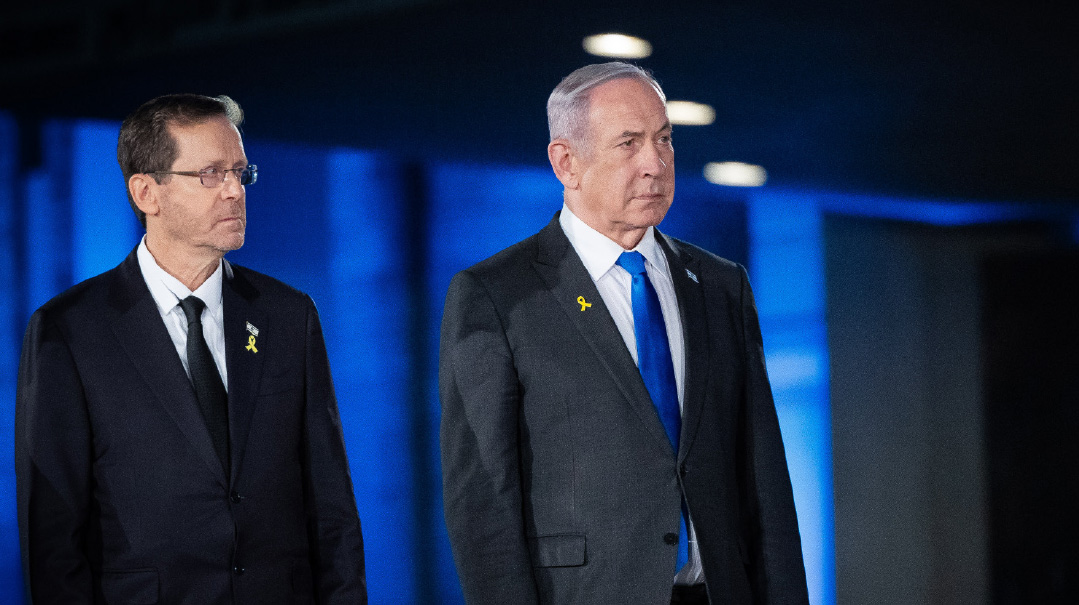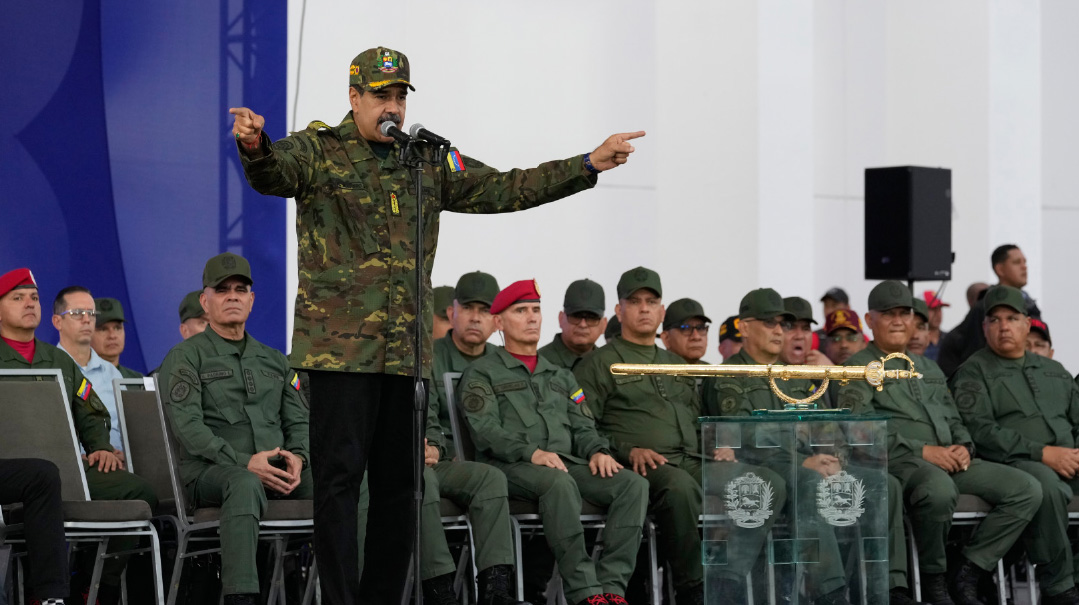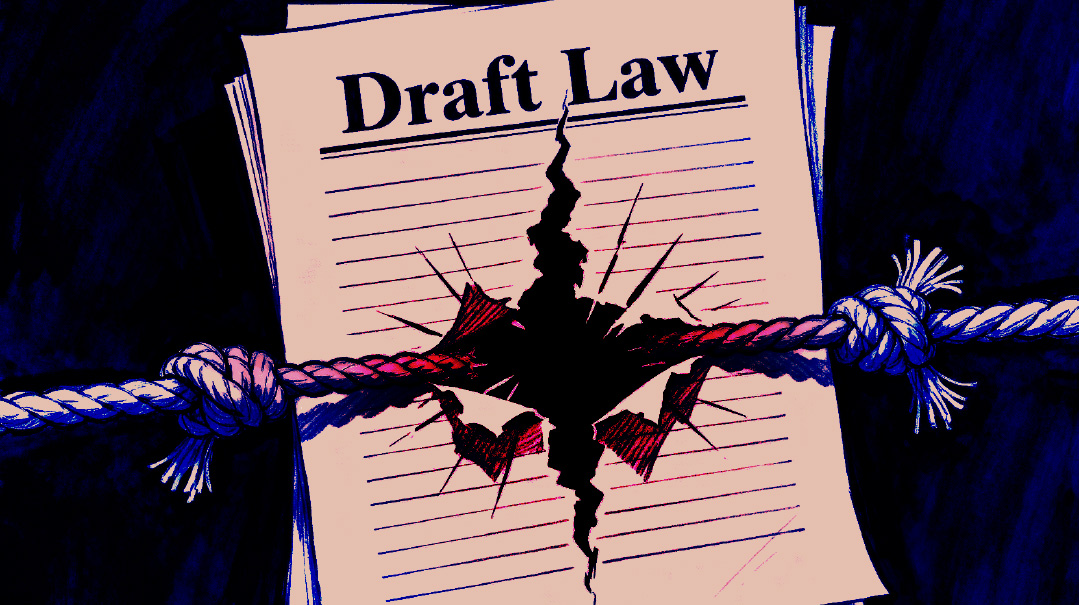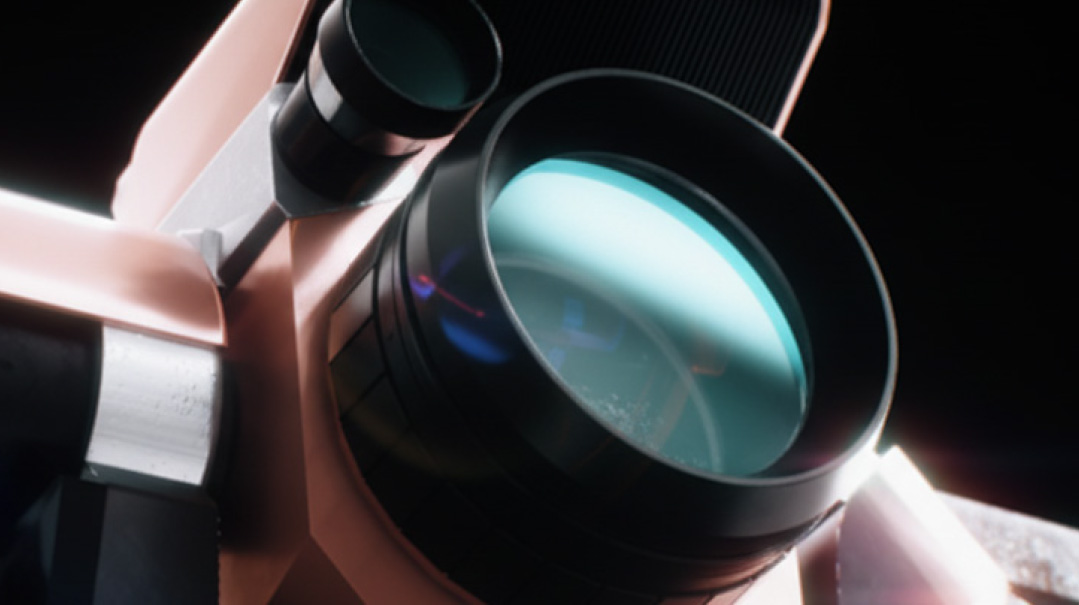Drone Strike
| November 14, 2023UAV’S play an ever-expanding role in Israel’s fight against Hamas
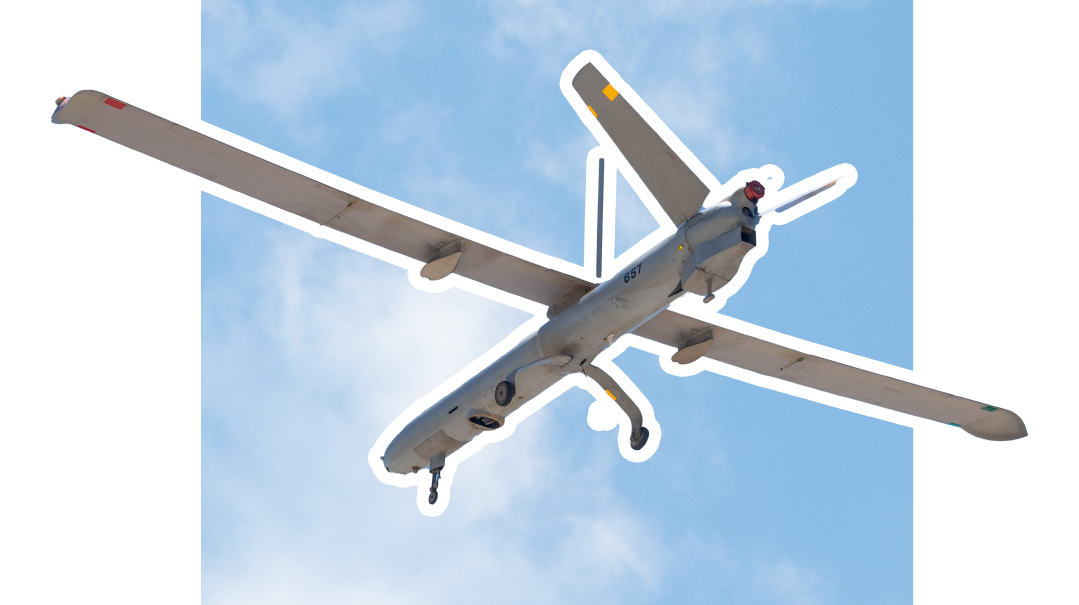
T
hese pilots have hardly slept for five weeks. They speak of the most powerful and wide-ranging strikes in Gaza they’ve ever made. And for the first time in history, they had to carry out strikes within Israeli territory, even on IDF bases. If not for their efforts in the early hours of Simchas Torah morning, they say, the massacre in the south would have been far worse. And yet, they’ve hardly left their underground control this whole time.
Meet Squadron 161, the only IAF squadron that operates Israel’s elite assault drone — the Zik.
Squadron 161, nicknamed the Black Snake Squadron, used to fly helicopters, and was known as the Second Cobra Squadron. Now, it has transitioned to unmanned aerial vehicles (UAVs). It’s the only unit operating the Elbit Hermes 450 assault UAV, also known as the Zik.
The first aircraft to respond to the attack on Simchas Torah were remotely operated drones such as the Zik. “ ‘Unmanned aerial vehicle’ is a catchall term for a diverse range of aircraft, commonly known as drones,” explains First Lieutenant A., a drone pilot in Squadron 161. “UAVs have a variety of uses. Some are designated as assault drones, carrying missiles and functioning for all intents and purposes as fighter jets, while others are used for intelligence gathering and other missions that can’t be disclosed.”
Superficially, the place looks like a regular airfield. The aircraft are lined up and ready for takeoff. One after another, vehicles approach the runway, while others land, rearm, and prepare to return to the air. The only difference between this airfield and the one nearby is that these aircraft are unmanned. The pilot or operator sits in an underground operating room at a hidden location on the Palmachim air base.
“The squadron is a large, complex organization with amazing people who are like family to each other,” he says. “In addition to the pilots, the people who operate the aircraft remotely, we have teams of UAV technicians and payload specialists. Aside from strikes and reconnaissance — which is what you hear about in the press — we also carry out surveillance and aerial mapping, among other things. We work around the clock every day, all day, especially for the past month.
“There are people here who haven’t seen their beds since 6:30 on the morning of Simchas Torah. They’ve been here ever since, and aside from snatching a few hours of sleep here and there, they’ve been on the job the entire time. We’re talking hundreds of people, professionals and reservists, and we’re all focused on the same goal.”
The planes are ranged in a long line. There’s a wide assortment of aircraft, from sinister-looking assault drones to graceful surveillance and reconnaissance vehicles, and others used in a variety of missions. “As you can see, these are big, heavy aircraft. Some reach lengths of 15 meters or more, they’re not toys. This is a plane in every sense of the term that can carry out almost any mission a fighter jet can carry out — with the massive advantage that there’s no danger to the pilot, since these are operated remotely.
“What’s unique about our squadron is that we’re not organized around a single task but rather carry out a wide range of missions, and each one’s work complements the others’. For example, one of our pilots could fly a surveillance aircraft for intelligence gathering, and when he’s done, a reconnaissance drone heads out to map the area, and by the time he’s done, an attack drone is on the way. We work very closely with each other, but also with other squadrons and other branches of the IDF and the defense establishment. There’s a perfect synchronization of different branches that has proven itself in the quality of our air strikes and intelligence gathering.”
Last Wednesday, with the IDF chief of staff’s approval, a new type of UAV called the Nitzotz was deployed in Gaza for the first time as part of the secret “Storm Clouds” project, first unveiled in 2022. The Nitzotz (“spark”) is considered extremely quiet, can remain over enemy territory for prolonged periods, and possesses advanced sensory capabilities for exposing enemy targets. Since Wednesday, the new drones are being used to detect Hamas operatives in the densest neighborhoods of Gaza.
The main purpose of the new drones — developed by defense contractor Rafael Aeronautics in collaboration with the Defense Ministry and incorporated into Squadron 144, the “Phoenix Squadron,” at Hatzor Air Base — is gathering intelligence in heavily populated, built-up areas. The drone is helping the air force, military intelligence, and ground forces in the Strip carry out “expose-attack” missions.
According to a senior official in the Southern Command: “This system will add a new dimension to the IDF’s capabilities. The Nitzotz will help the forces on the ground a lot, with an emphasis on the brigade combat team. The enemy rarely shows himself, and even then, only very briefly. If we can learn to detect and attack them in time, through various methods, we’ll be able to expand on our achievements and destroy Hamas. Our goal is to use Storm Clouds to control territory. Instead of watching a specific point, it will command an extensive geographical area and alert us to anything moving that seems suspicious, based on the criteria we give it.”
The new multipurpose Nitzotz can gather information for special missions, escort troops on the ground, and help shorten operations with the new expose-attack tactics. Per a senior IDF source, the Nitzotz’s design enables relatively quick activation, and is less expensive than heavier drones.
“Its ability to work in ‘flocks’ makes the Nitzotz a massive asset on the battlefield,” the source said.
Just Like a Jet
They may be sitting in an air-conditioned control room on the ground, but the experience is the same as a regular pilot’s. “When you go into the control station and put on your helmet, you’re in a different place. It’s the same stress, you’re entering a combat zone no differently than a fighter jet, you see everything just like a jet, you’re responsible for human life just like in a jet, and the strike is exactly the same. It’s the same responsibility, the same mission, and the same pressure. There’s no difference between a remotely operated drone and a fighter jet, aside from the danger to the pilot himself.”
On the black Shabbos of October 7, Simchas Torah, First Lieutenant A. was on leave. “Shabbos morning, I was at home, my phone was off, and suddenly I’m wakened by sirens. Once, twice, the third time I realized something was going on and turned on my phone. One call to the squadron and they told us to report to base immediately. I drove as fast as I could, and when I arrived, I realized that we were at war. I still didn’t know what exactly was happening, but I saw tons of people, pilots running already in their pilot suits, some of the operators already in their control stations. After that I started getting a much broader picture of what was happening.
“I got ready in minutes, all while hearing horror stories from fellow pilots about hundreds or thousands of terrorists who had infiltrated the country.”
The squadron was facing a scenario they had never imagined, on an undreamt-of scale, and above all, having to carry out strikes inside Israeli territory, inside bases, inside kibbutzim, something they had never prepared for.
“Who ever thought we would have to carry out strikes inside Israeli territory, and on that scale? That was a scenario we had never imagined.”
But they quickly adapted themselves to the situation.
“One of the strangest things that Shabbos was the intelligence gathering. We usually get an orderly intelligence briefing in advance, we know exactly where to go and what to do. In this case, our intelligence source was civilians on the ground. We entered our control stations with our phones, which is usually against protocol, and we called civilians in the kibbutzim and yishuvim in real time, and they gave us terrorists’ locations. We eliminated dozens of terrorists this way. You talk to a civilian, receive a location, release your payload, and return to base. Again and again, like a movie.”
On each flight, they killed dozens of terrorists, prevented them from advancing further into Israel or returning to the Strip with captives, and helped stop the attack.
“There were images we had never seen before. One of the advantages of our aircraft is the high quality of the cameras. Now they served us well. We saw everything. The massacre, the horrors.”
A Warplane Is Not a Bike
A few days ago, an officer in the Gaza division told me how he had directed the air force to bomb an IDF base to eliminate terrorists. “I just stood inside a hidden shelter, and whenever I saw terrorists, I verified there were no soldiers around and told them to bomb. It happened again and again.”
There are similar stories in the kibbutzim. Yet some claim that for the first few hours, the air force just wasn’t there. When I raise this issue with the squadron, they’re angry, and rightly so.
“That’s just basic ignorance about how the air force works,” they say. “People need to understand that a fighter jet is not a bicycle. You don’t just climb on and start zooming. It’s something that takes time. We have thousands of fighter jets and drones, but you also need thousands of personnel. Pilots, navigators, intelligence people, operators, maintenance workers, technicians, payload specialists, etc. It takes time to arm a plane and prepare it for flight.
“We started working from the first minute at 150 percent and effectively prevented the massacre from continuing. Without the drones and fighter jets, the killing would have gone on. There’s no question about it. Without the drone squadrons, the outcome would have been far worse.”
I ask them why they couldn’t send aircraft to the fence to attack every cell trying to enter Israel or return to the Strip with captives. The technology exists, after all.
“I can’t go into the way the air force works and what exactly we did, for understandable reasons, but I can tell you that we worked on that front too,” responds First Lieutenant A. “At the end of the day, there are certain prioritizations that the public is not aware of, and there are things we can’t do for a variety of reasons. But believe me that we did do that as well.”
Questioning of soldiers on the ground at the time provides a bigger picture that may shed light on that question as well.
“When we were on the ground in Be’eri and directed air force aircraft to strike terrorists, there was no way we could divert aircraft elsewhere,” says one soldier we spoke to. “You should realize that the very few soldiers on the ground in Be’eri were almost entirely on their own, and if they had not had air support at that point, not only would nothing have been left of Be’eri, nothing would have been left of us, either.
“It’s not like you could request for aircraft to be diverted elsewhere because it was calmer in your sector. There were hundreds of active sites, and the only consideration that went through your mind was not ‘where are there more terrorists to eliminate,’ but ‘where are there more civilians to save.’ That’s what guided us, and that’s what guided the air force as well, based on the directions we sent them from the ground.”
Barely Sleeping
More than a month has passed since that day, and the squadron is barely sleeping. “We’ve seen operations before, we’ve seen wars, but we’ve never seen strikes on this scale ever before. We’re in the air almost every hour of the day. We only return to base to rearm and refuel. Some drones have been carrying out dozens of strikes a day, and there are dozens and hundreds of them. We’re talking thousands of strikes every week, some with a force that we’ve never used in the past.”
Now, in addition to continuing the strikes in the Strip, Lebanon, and Judea and Samaria (yes, they’re active there too), the squadron has another mission. “Basically, every IDF platoon fighting terrorists on the ground in Gaza has a drone covering it from the air. The drones also provide troops with surveillance, help them with strikes, and protect them from the air. There’s an enormous number of aircraft in the air at any given moment. Numbers we’re never seen before.”
Even as we speak, the squadron are preparing for their next mission. A sensitive and highly complex mission inside Gaza, though such an operation can no longer be described as unusual. “Due to the extent and power of our strikes, a mission that would once have been considered highly complex and unusual is now a mere afterthought. Things that we used to do once a year, if at all, we now do five times a day in the worst-case scenario and 20 times in the best-case. We still have a lot of work ahead of us, but we’re determined to do everything to restore security to the citizens of our country. This is really a war of ‘to be or not to be,’ and we feel that in our bones.”
(Originally featured in Mishpacha, Issue 986)
Oops! We could not locate your form.


